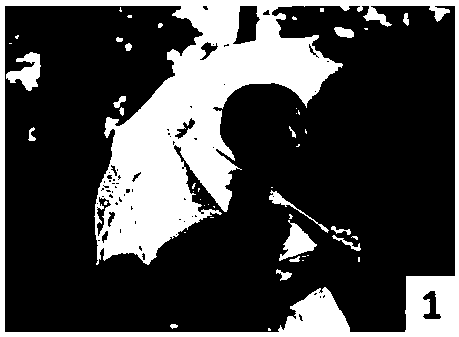Rain removing method for single image
A single image and image technology, applied in the field of single image rain removal, can solve the problems of poor real-time performance of the algorithm, serious problems, residual rain lines, etc., and achieve the effects of good real-time performance, improved performance, and good sparse representation performance
- Summary
- Abstract
- Description
- Claims
- Application Information
AI Technical Summary
Problems solved by technology
Method used
Image
Examples
Embodiment Construction
[0049] Image rain removal based on dictionary learning can be regarded as a binary classification problem. Through the dictionary learning of high-frequency images and their sparse representation, the learned dictionaries are divided into rainy dictionaries and non-rainy dictionaries. The background image has a structure similar to rain lines. In the region, the similarity between dictionary atoms is relatively high, so we hope to build the model to achieve the following performance:
[0050] (1) The learned dictionary atoms have good separability, that is, the similarity between atoms is low, which can greatly improve the classification performance of atoms, thereby ensuring the separation of high-frequency rain-free components and rainy components;
[0051] (2) The learned dictionary has a certain unit tight frame, can obtain better sparse reconstruction performance, and the expression coefficient can reflect certain image rules;
[0052] However, it is very difficult to directly c...
PUM
 Login to View More
Login to View More Abstract
Description
Claims
Application Information
 Login to View More
Login to View More - R&D
- Intellectual Property
- Life Sciences
- Materials
- Tech Scout
- Unparalleled Data Quality
- Higher Quality Content
- 60% Fewer Hallucinations
Browse by: Latest US Patents, China's latest patents, Technical Efficacy Thesaurus, Application Domain, Technology Topic, Popular Technical Reports.
© 2025 PatSnap. All rights reserved.Legal|Privacy policy|Modern Slavery Act Transparency Statement|Sitemap|About US| Contact US: help@patsnap.com



